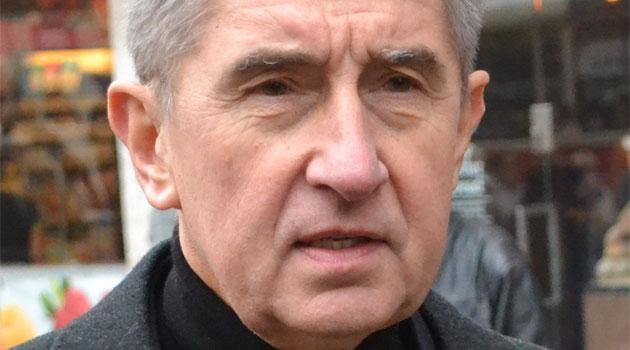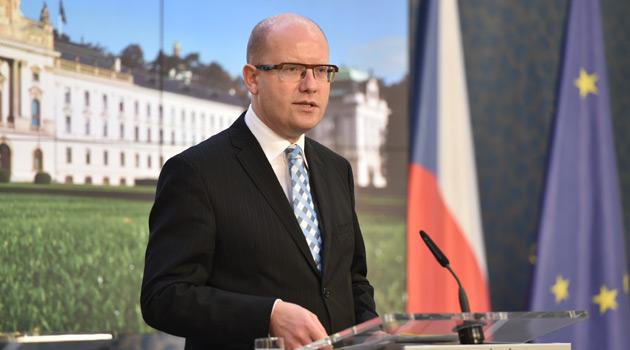Czech Vice PM to visit former concentration camp for Roma, allegedly wants to find money to move pig farm

The Czech News Agency reports that Czech Vice Prime Minister Andrej Babiš (ANO) has told the wire service he will visit the location in the town of Lety u Písku where a concentration camp for Roma was formerly situated. The Vice PMalso said he wants to raise money to complete the construction of the memorial there and arrange for the pig farm now on the site of the former camp to be bought by the state.
Babiš made the announcement in reaction to criticism of his remarks last week about the Romani concentration camp. He is facing calls to resign and a criminal report has been filed against him.
The opposition wants to include an agenda item about the Vice PM’s remarks on the agenda of the lower house this week. Speaking on the Prima television station yesterday, Czech PM Bohuslav Sobotka (Czech Social Democratic Party – ČSSD) said it would not be necessary for the legislature to raise the issue if Babiš addresses the lower house on his own and distances himself from the remarks.
During a visit to the Czech town of Varnsdorf, a photojournalist for Aktuálně.cz heard the Vice PM, who is chair of the ANO movement, say it was a “lie” that Lety had been a concentration camp. “It was a labor camp. Whoever didn’t work, bam! He was there,” the Vice PM allegedly said.
There is no audio recording of the alleged remarks. Babiš claims to have expressed himself awkwardly.
“If I have offended somebody, I apologize. I did not mean it like that at all, what I said is being taken out of context,” the Vice PM said on Friday.
Sobotka said the Vice PM’s remarks were absolutely unacceptable. He said he had asked Babiš to apologize, to visit Lety, and to pay his respects to the victims.
The PM said he considered the matter to be one for Babiš himself to resolve, not a matter for the coalition government. On Friday the PM said the Vice PM was “leeching off of” problems that exist with the coexistence of non-Romani and Romani people and that he had crossed the thin line between Nazism and populism.
Babiš to visit Lety next week, wants to raise money
Babiš told the Czech News Agency that he has already apologized for his remarks more than once. “It decidedly was not my intention to deny the Holocaust. Nevertheless, that remark is being used against me,” he has written.
The Vice PM said he believes most of the politicians criticizing him are hypocrites who have done nothing for the past 20 years to make sure the question of the pig farm at the location of the former camp was resolved. “I have dealt with this question with [Culture] Minister Herman and promised him that I will find money to complete the memorial and next week I will visit the location where the camp at Lety used to be,” he said.
Babiš went on to say that he believes Sobotka is doing his best to “feed” the scandal and “keep it on the airwaves” through his criticism. “It’s absolutely unfair of him, but I am accustomed to dirty tricks from ČSSD,” the Vice PM said.
He also called on the PM to visit Kovářská Street in Varnsdorf, where Babiš himself was last week when he made his remarks, and to speak with the long-term residents there. “He should visit the apartment units in the excluded locality there. I will deal with the state buying the pig farm and the building of the memorial,” Babiš told the Czech News Agency.
History of the concentration camp at Lety by Písek
The original space at Lety served in 1940 as an accommodation facility for construction workers. Subsequently, a disciplinary labor camp was created there on the orders of the Interior Minister of the Protectorate Government, Josef Ježek, on 15 July 1940, issued on the basis of Government Decree No. 72 on disciplinary labor camps dated 2 March 1939.
That particular decree had been issued prior to the country being occupied by the Nazis. According to the decree, “wandering gypsies and other vagrants living in the same way who are capable of work, beggars by trade and those who make a living from begging (children, etc.), gamblers by trade, inveterate idlers, loafers and persons making a living from dishonest earnings (prostitution, etc.), whether their own or those of others” were to be rounded up and concentrated in particular facilities.
The first 12 prisoners arrived at Lety on 17 July 1940. On 1 August 1942 the camp was changed into a “Gypsy camp” and subsequently entire Romani families were transported there.
The concentration camp began running on 1 August 1942 and was closed on 4 May 1943. Its capacity was increased to accommodate up to 600 prisoners, but that number was soon exceeded, as during the course of August 1942 more than 1 100 children, men and women were interned in the camp.
The camp was not equipped with the necessary hygienic or other facilities for such a large number of people. The prisoners often had to bathe in a nearby fishpond.
Until August 1942, only men were imprisoned at Lety. After that, children and women were also brought there to rot in completely unsatisfactory conditions.
After the big influx of August 1942, whole families were mostly brought to the camp as well as individuals. A total of 326 people died directly in the Lety camp, 241 of them children.
A temporary burial ground near the camp was used to inter 120 victims. Another 540 prisoners from Lety perished while being transported to Auschwitz.
A total of two mass transports were undertaken. The first one departed on 3 December 1942 as a transport of so-called asocials, 16 men and 78 women, to the Auschwitz I concentration camp.
The second transport practically meant the liquidation of the Lety camp, as it included 417 prisoners who went to the Auschwitz II-Birkenau concentration camp. While the first transport took place on the basis of a decree about crime prevention, the second took place on the basis of Himmler’s decree of 16 December 1942, which ordered the transport of all Romani people to the Auschwitz concentration camp.
The remaining 198 prisoners were then relocated to the “gypsy camp” at Hodonín near Kunštát (the so-called Žalov camp) or were interned in camps in Pardubice and Prague. On 13 May 1995, at the site of the mass grave next to the former camp, a memorial was unveiled with the inscription “To the victims of the gypsy camp at Lety 1942-1943. Never forget. Ma bisteren.”
On 13 May 2010 the Lety Memorial was officially opened there. A government decision has entrusted the Lidice Memorial with its management.
